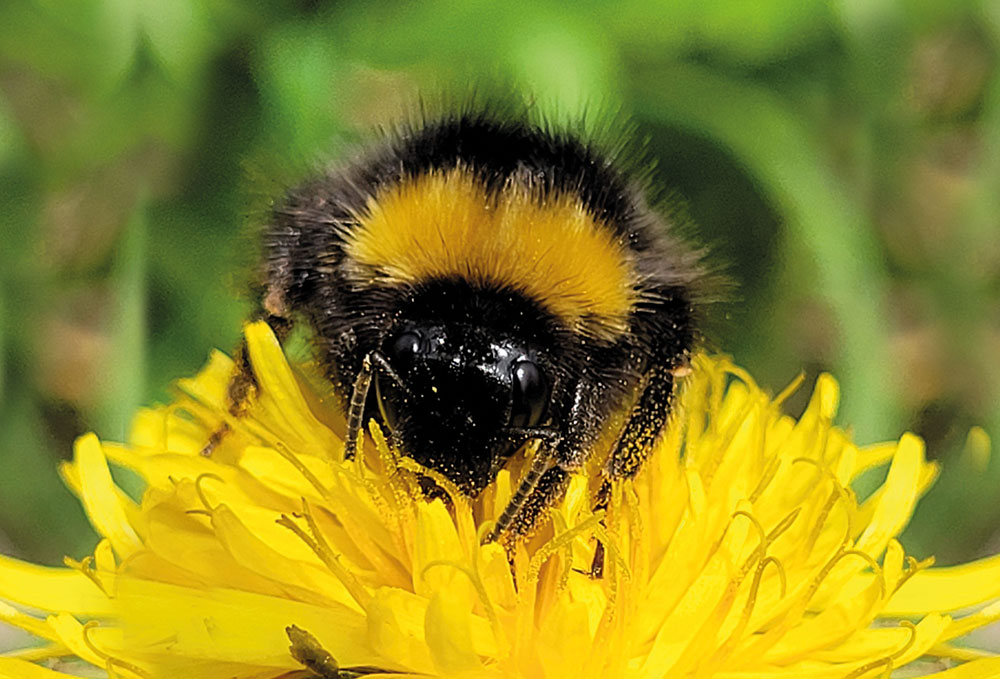01 March 2024
Leading poll-en
Increasing the prevalence of wild pollinators is one of many strategies to combat biodiversity loss. As part of the EU-CAP Network, Teagasc researchers are examining how this may be brought about, explains Research Officer Saorla Kavanagh.

There are many initiatives and strategies in place that aim to help halt and reverse the decline of biodiversity. The European Biodiversity strategy for 2030 and the EU Pollinator Initiative aim to protect nature and reverse the degradation of ecosystems and set the commitment to reverse the decline in wild pollinators by 2030.
Decoupling economic growth from the exploitation of natural resources, protecting ecosystem services, and restoring habitats are some of the key principles of the European Green Deal. The EU-CAP Network is a forum through which administrations, entrepreneurs, farmers, organisations and researchers can share knowledge and information about agriculture and rural policy.
Assessing the landscape
Using a range of platforms, the network facilitates knowledge sharing on topics relating to biodiversity, pollinators and water on farmland. Last year, it organised the Focus Group Enhancing the biodiversity on farmland through high-diversity landscape features.
Saorla Kavanagh, a Biodiversity Research Officer from Teagasc’s Environment, Soils and Land-Use Department joined 19 other experts including four farmers to participate.
The aim of the Focus Group was to determine how farmers can maintain, enhance and create high-diversity landscape features (HDLF) that positively affect farmland biodiversity. As a result of these meetings, a report and five mini papers were published. Saorla was the lead author on Mini Paper 3: Managing High-Diversity Landscape Features for Pollinators. The mini paper gave an overview of:
- what HDLF benefit pollinators and farmers and the associated costs
- how managing HDLF for pollinators on the farm benefits farmers
- what farmer supports are needed to help farmers manage HDLF
- what is needed to maintain, enhance, and create HDLF.
The mini paper also highlights research needs and ideas for innovation.
As Saorla explains: “We are at risk of squeezing nature out entirely from intensive farmland, and in doing this we jeopardise the important free services nature provides. Pollinators can be returned to all farmland without negatively affecting productivity. The important role of measures under the Common Agricultural Policy in encouraging the management of HDLF and adequately rewarding farmers for their conservation cannot be underestimated.”
Managing HDLF on the farm for pollinators can result in an increase in habitats for a much wider component of biodiversity. HDLF can be integrated into any farming system; however, it is suggested that a focus on a whole-farm approach, as compared to a field-by-field approach, will more likely fit within farming systems, and gain farmer support. Managing HDLF across multiple farms and the wider landscape is likely to provide the best outcome for halting and reversing pollinator decline.
Saorla adds: “Pollinators provide a vital service to natural ecosystems and farming, and therefore should be offered a high level of protection given the potentially far-reaching effects of their decline.”
To help manage HDLF for pollinators and wider biodiversity on farmland, more resources are needed to help facilitate the transfer of biodiversity knowledge within the farming community. In 2024 there will be an EU CAP Network workshop on halting pollinator decline in Europe.
[pic credit] Teagasc
Further reading
Managing HDLF for pollinators (PDF)
EU CAP Network Focus Group Enhancing the biodiversity on farmland through high-diversity landscape
